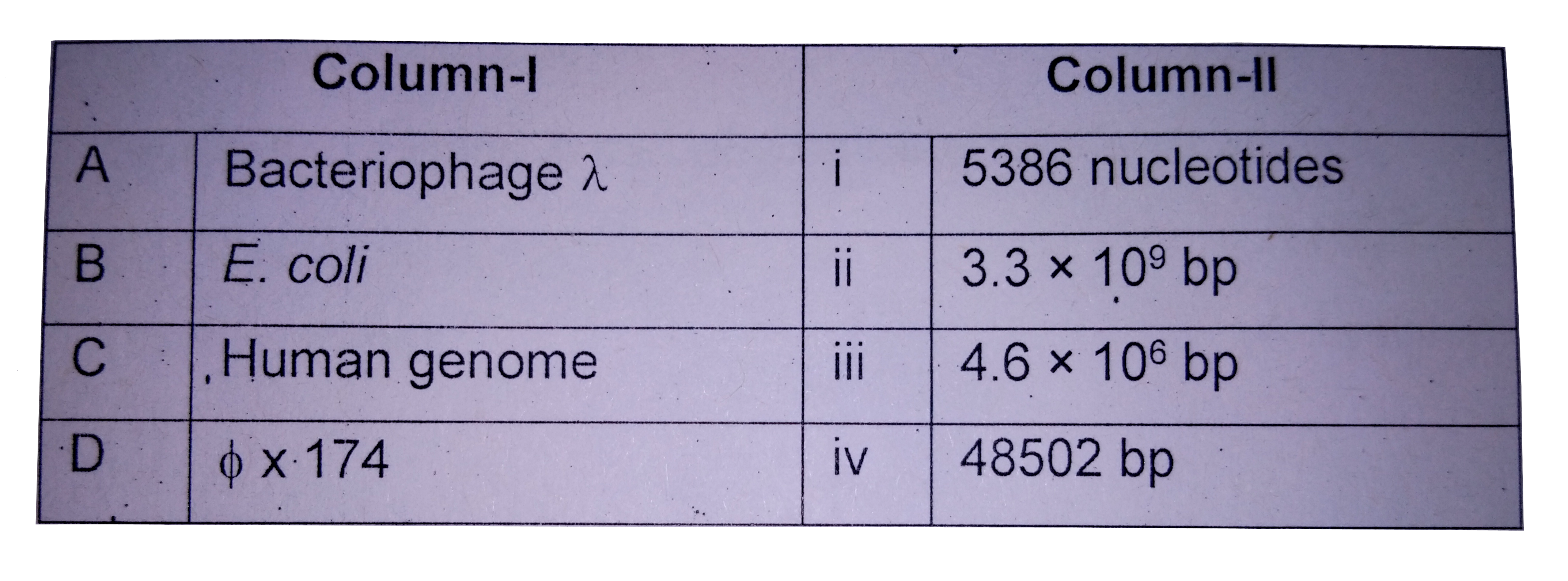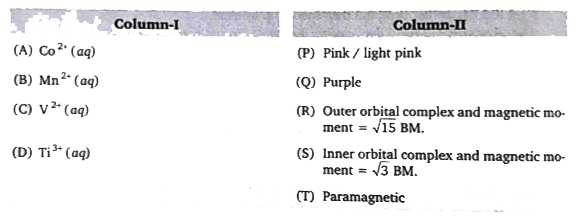Column - II shows the optical phenomenon that can be associated with optical components given in column- I . Note the column - I may have more than one matching options in column-II.
Column IColumn II(A)Convex mirror(p)Dispersion(B)Converging lens(q)Deviation(C)Thin prism(r)Real image of real object(D)Glass slab(s)Virtual images of real object
The correct Answer is:(A)-q,s (B)-p,q,r,s (C) - p,q,s (d)-s
To solve the problem, we need to match the optical components in Column I with the appropriate optical phenomena in Column II. Let's analyze each optical component step by step.
Step 1: Analyze Convex Mirror (A)
- A convex mirror always forms a virtual image. This is because the reflected rays diverge, and the image appears to be behind the mirror.
- Convex mirrors do not cause dispersion; they primarily reflect light without separating it into different colors.
- Therefore, the correct matches for the convex mirror are:
- (s) Virtual images of real objects
- (q) Deviation is not applicable here.
Matches: (s)
Step 2: Analyze Converging Lens (B)
- A converging lens (or convex lens) can form both real and virtual images depending on the position of the object relative to the focal point.
- It can cause dispersion (separation of light into its component colors) and deviation (bending of light rays).
- Therefore, the correct matches for the converging lens are:
- (p) Dispersion
- (q) Deviation
- (r) Real image of real object
- (s) Virtual images of real objects (when the object is between the focal point and optical center).
Matches: (p), (q), (r), (s)
Step 3: Analyze Thin Prism (C)
- A thin prism causes dispersion as it separates light into its constituent colors when light passes through it.
- It also causes deviation of light rays.
- Prisms do not form real images; they can only form virtual images.
- Therefore, the correct matches for the thin prism are:
- (p) Dispersion
- (q) Deviation
- (s) Virtual images of real objects.
Matches: (p), (q), (s)
Step 4: Analyze Glass Slab (D)
- A glass slab does not cause dispersion; it only refracts light without separating it into colors.
- It does not cause deviation in the sense of changing the path of light significantly; the light emerges parallel to its original direction.
- However, it can create a virtual image due to the bending of light at the boundaries.
- Therefore, the correct match for the glass slab is:
- (s) Virtual images of real objects.
Matches: (s)
Final Matches Summary:
- (A) Convex mirror → (s)
- (B) Converging lens → (p), (q), (r), (s)
- (C) Thin prism → (p), (q), (s)
- (D) Glass slab → (s)
- A convex mirror always forms a virtual image. This is because the reflected rays diverge, and the image appears to be behind the mirror.
- Convex mirrors do not cause dispersion; they primarily reflect light without separating it into different colors.
- Therefore, the correct matches for the convex mirror are:
- (s) Virtual images of real objects
- (q) Deviation is not applicable here.
- A converging lens (or convex lens) can form both real and virtual images depending on the position of the object relative to the focal point.
- It can cause dispersion (separation of light into its component colors) and deviation (bending of light rays).
- Therefore, the correct matches for the converging lens are:
- (p) Dispersion
- (q) Deviation
- (r) Real image of real object
- (s) Virtual images of real objects (when the object is between the focal point and optical center).
- A thin prism causes dispersion as it separates light into its constituent colors when light passes through it.
- It also causes deviation of light rays.
- Prisms do not form real images; they can only form virtual images.
- Therefore, the correct matches for the thin prism are:
- (p) Dispersion
- (q) Deviation
- (s) Virtual images of real objects.
- A glass slab does not cause dispersion; it only refracts light without separating it into colors.
- It does not cause deviation in the sense of changing the path of light significantly; the light emerges parallel to its original direction.
- However, it can create a virtual image due to the bending of light at the boundaries.
- Therefore, the correct match for the glass slab is:
- (s) Virtual images of real objects.
- (A) Convex mirror → (s)
- (B) Converging lens → (p), (q), (r), (s)
- (C) Thin prism → (p), (q), (s)
- (D) Glass slab → (s)
Topper's Solved these Questions
- BOOK - ALLENCHAPTER - GEOMETRICAL OPTICSEXERCISE - EXERCISE-04[A]23videos
GEOMETRICAL OPTICS
- BOOK - ALLENCHAPTER - GEOMETRICAL OPTICSEXERCISE - EXERCISE-04[B]18videos
GEOMETRICAL OPTICS
- BOOK - ALLENCHAPTER - GEOMETRICAL OPTICSEXERCISE - EXERCISE-244videos
GEOMETRICAL OPTICS
- BOOK - ALLENCHAPTER - CURRENT ELECTRICITYEXERCISE - EX.II66videos
CURRENT ELECTRICITY
- BOOK - ALLENCHAPTER - GRAVITATIONEXERCISE - EXERCISE 49videos
GRAVITATION
Similar Questions
Match the following (one term in column-I may match with more than one terms in column-II).
 View Solution
View SolutionMatch column-I to the column-II and select the option having correct matching –
 View Solution
View SolutionMatch the column I with Column II:-
Column IColumn II(A) Unicellular(i) Spirogyra(B) Colonial(ii) Kelps(C) Filamentous(iii) Volvox(D) massive plant bodies(iv) ChlamydomonasView SolutionEntries of Column-I are to be matched with entries of Coloumn-II. Each entry of Column-I may have the matching with one or more than one entries of Column-II.
 View Solution
View SolutionEntries of Column-I are to be matched with entries of Coloumn-II. Each entry of Column-I may have the matching with one or more than one entries of Column-II.
 View Solution
View SolutionEntries of Column-I are to be matched with entries of Coloumn-II. Each entry of Column-I may have the matching with one or more than one entries of Column-II.
 View Solution
View SolutionColumn - I and Column - II contains four emtries each. Entries of Column -I are to be matched with some entries of Column - II . One or more than one entries of Column -I may have the matching with the same entries of Column - II.
column-Icolumn-II(A) Chemisorption(P) Exothermic(B) Physical adsorption(Q) Endoothermic (C) Desorption(R) Removal of adsorbed material(D) Activation of adsorbent(S) Highly specific in natureView SolutionColumn - I and Column - II contains four emtries each. Entries of Column -I are to be matched with some entries of Column - II . One or more than one entries of Column -I may have the matching with the same entries of Column - II.
column-Icolumn-II(A) milk(P) Aerosol (B) Dust(Q) Emuslion(C) Cheese(R) Gel (D)Froth (S) fromView SolutionMatch the statement given in Column I with the phenomenon given in Column II.
 View Solution
View SolutionEntries of Column-I are to be matched with entrices of Column-II. Each entry of Column-I may have the matching with one or more than entries of Column-II
 View Solution
View Solution

